SEO
How to Find Trending Keywords for SEO
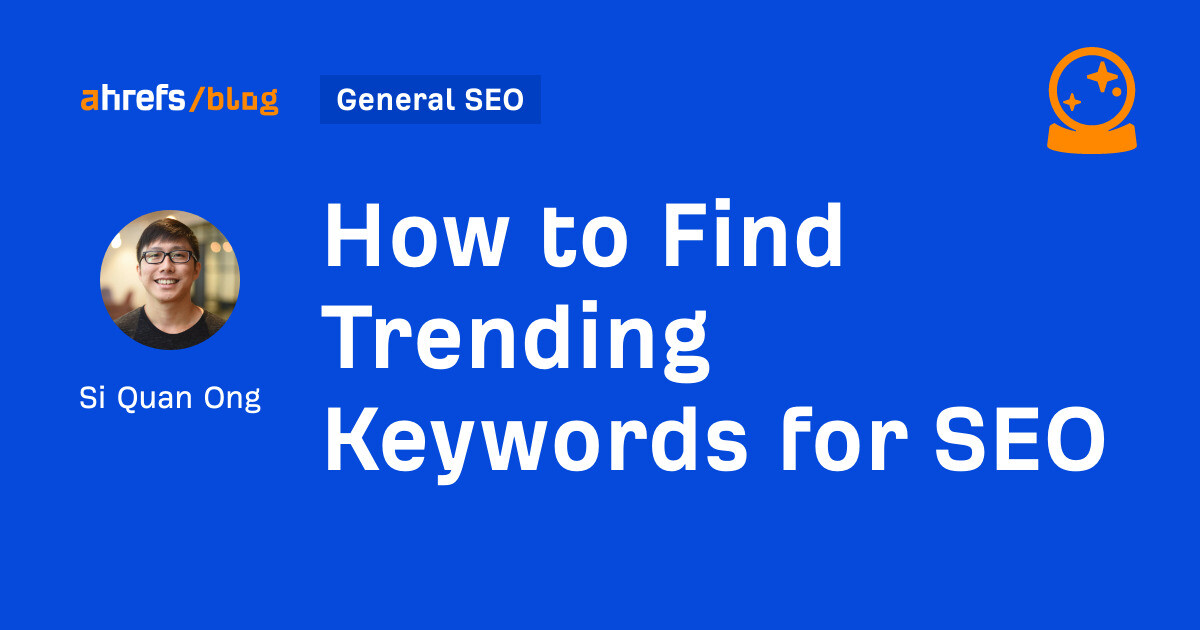
One way in is to identify and rank for trending keywords before these big sites catch up and dominate the SERPs.
Here’s how you can discover trending keywords for your niche before competitors:
Enter any topic into Google Trends and you’ll see how it has been trending.
You can also adjust the timeframe to identify any emerging trends:
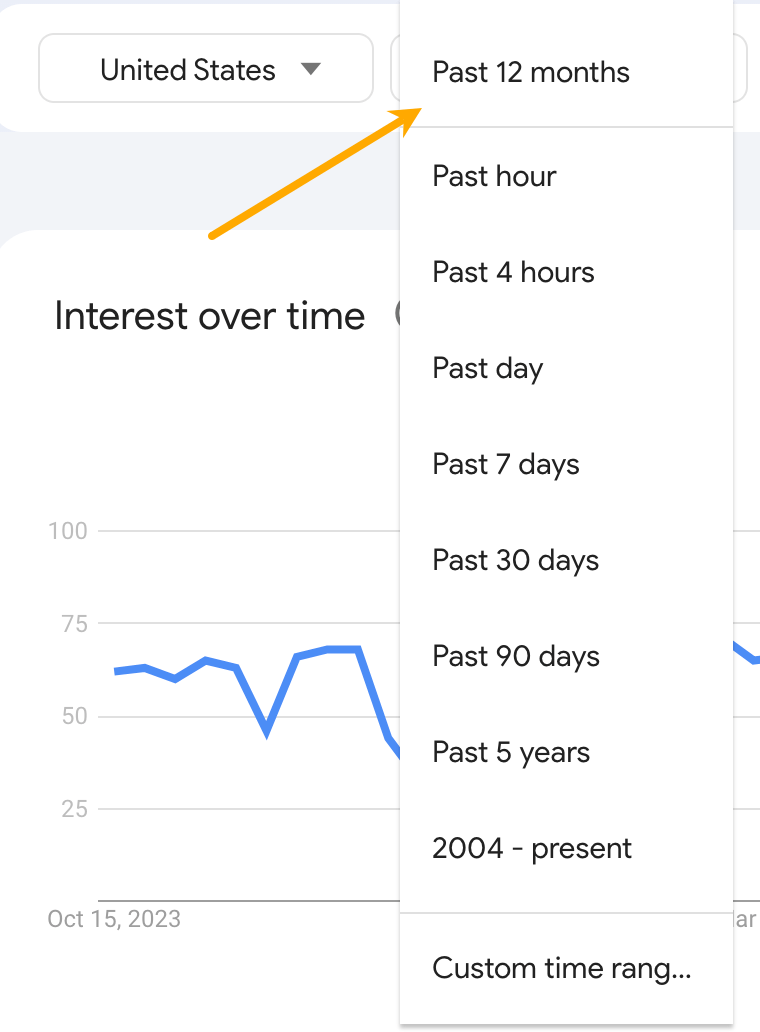

The best part of Google Trends, in my opinion, is the Related queries section at the bottom. It shows topics that are rising in interest over your selected timeframe:
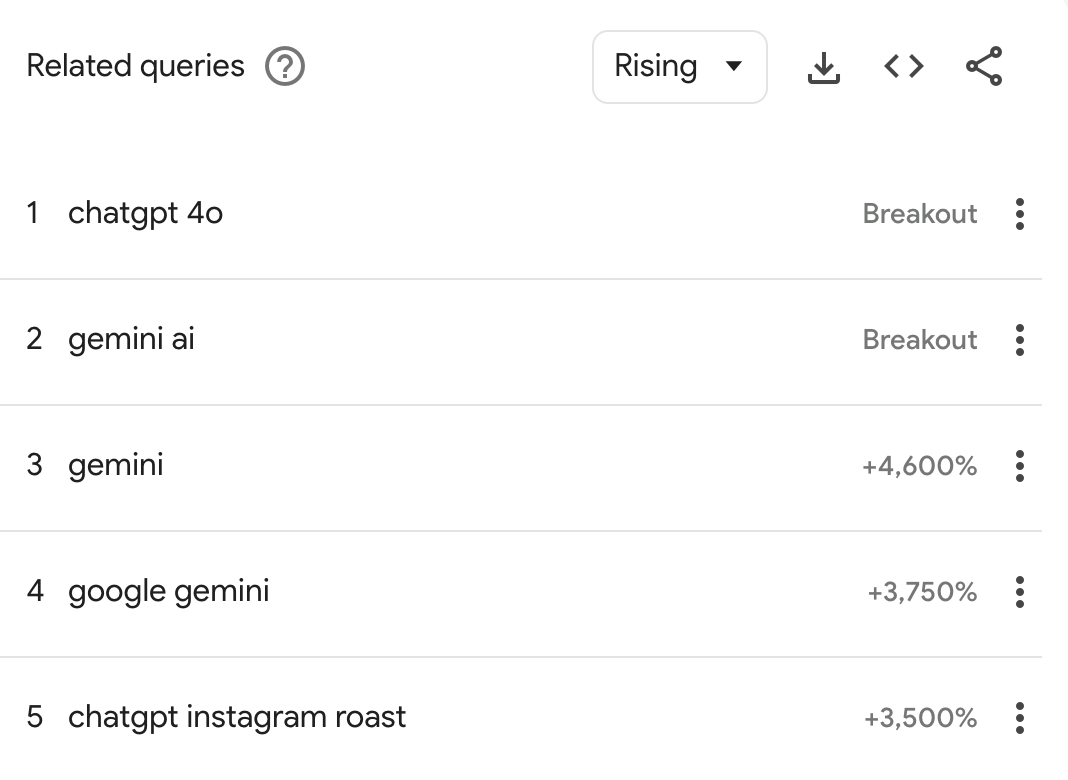

Look out for “breakout” terms, which means that the search term has experienced an increase in search volume of more than 5,000%.
The disappointing thing about Google Trends is that it doesn’t show you many trending keywords.


So, if you want to see a massive list of trending keywords, the best choice is to use Ahrefs’ Keywords Explorer.
Enter any topic, go to the Matching terms report, then click on the Growth column.


You’ll see >1.6 million keywords, sorted by the largest growth in search volume for the past three months. You can also select the timeframe by clicking the Period dropdown.
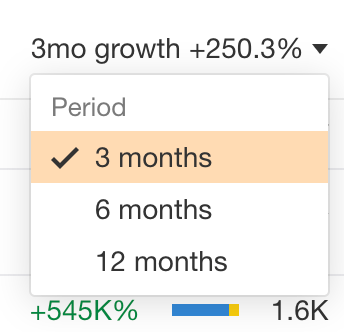

The best thing about using Keywords Explorer is that you get to see every important keyword metric, like its search volume (your country of choice or globally), its keyword difficulty (or how competitive it currently is to rank), its traffic potential (how much search traffic you could potentially get if you rank #1), its cost-per-click, and more.
You can even click on the SERP dropdown to see which pages are currently ranking for the keyword:
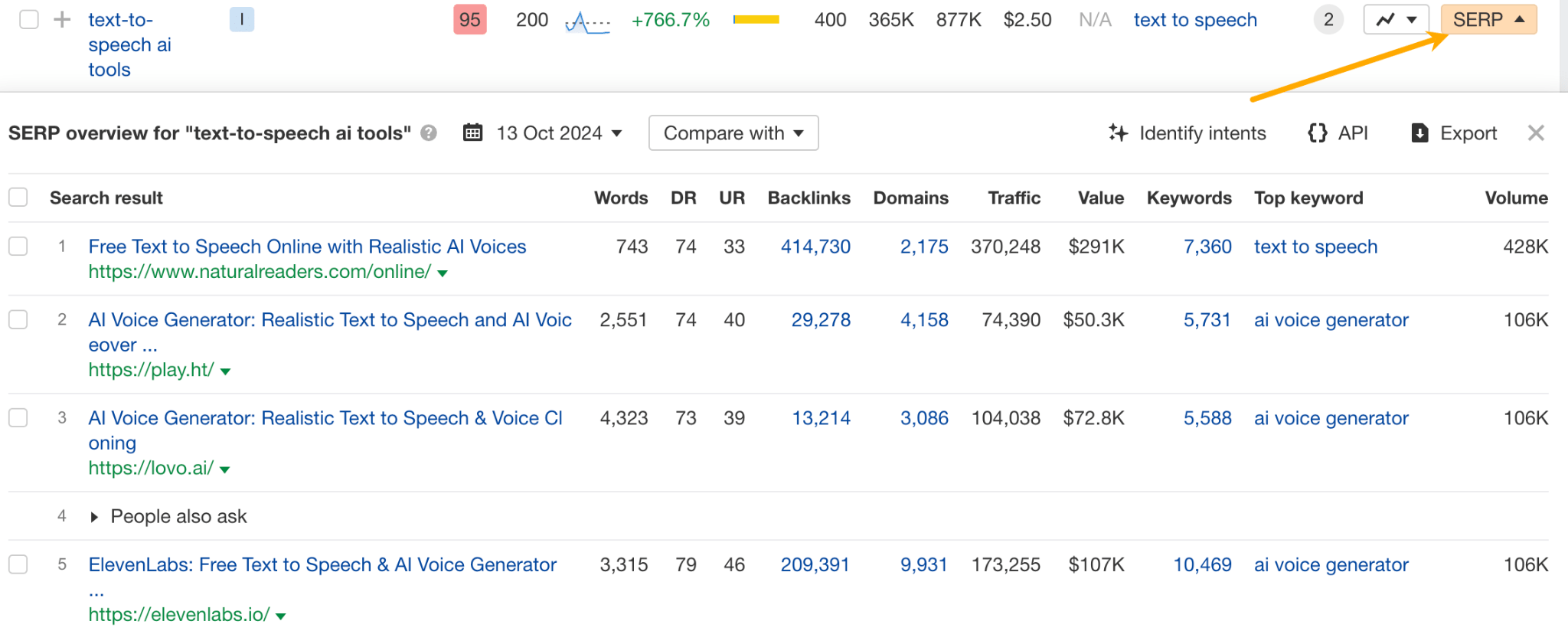

You can click on Identify Intents to find out what searchers are looking for when searching for this keyword:
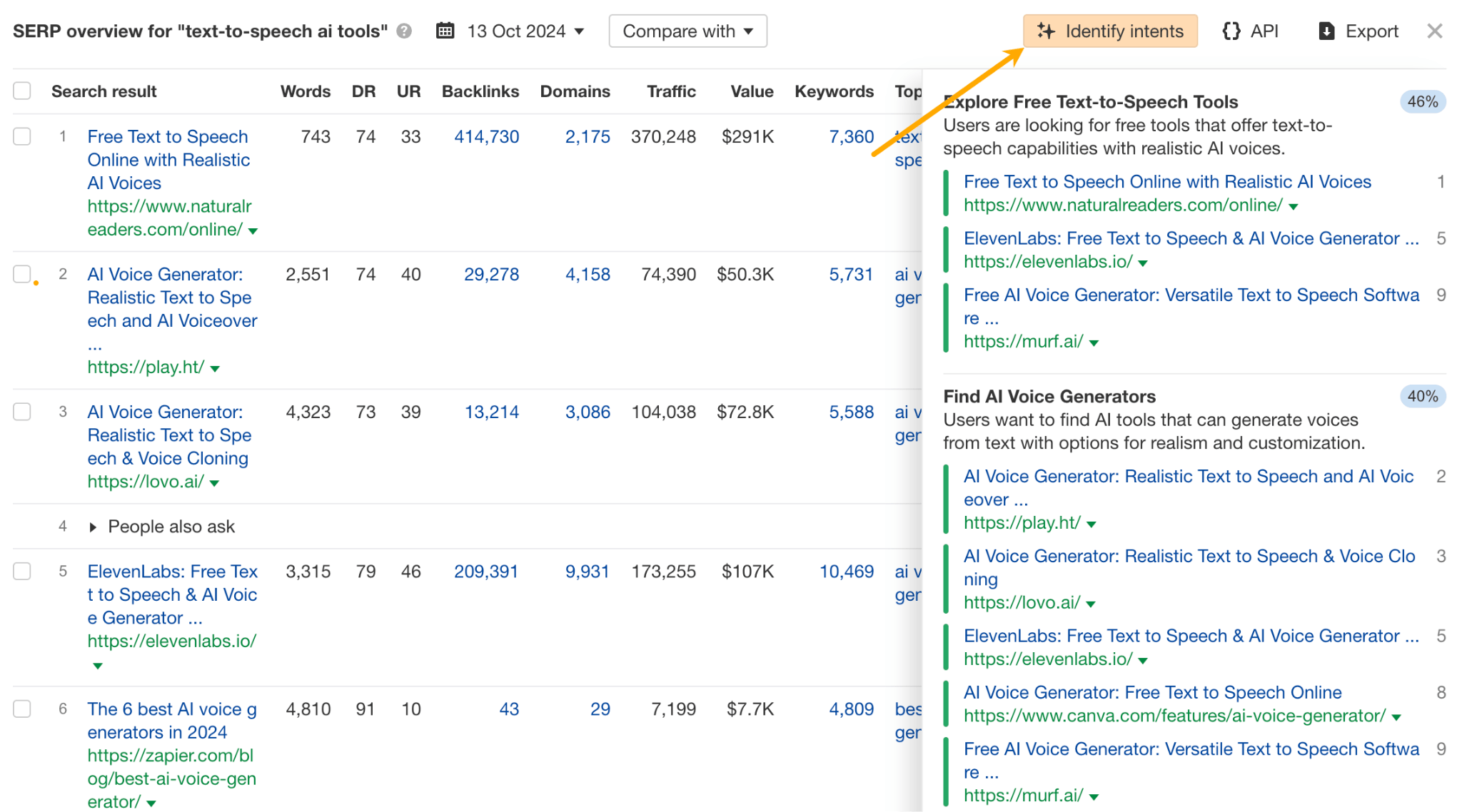

So, not only can you find keywords that are trending, you’ll also get every piece of information you need to rank high for that keyword too.
Whatever’s trending on the Internet will find its way to the “front page of the Internet.” In short, Reddit is a one-stop shop to find trending keywords.
Start by entering a relevant keyword in the search bar and look for relevant subreddits. For example, these are some of the subreddits for “knives”:
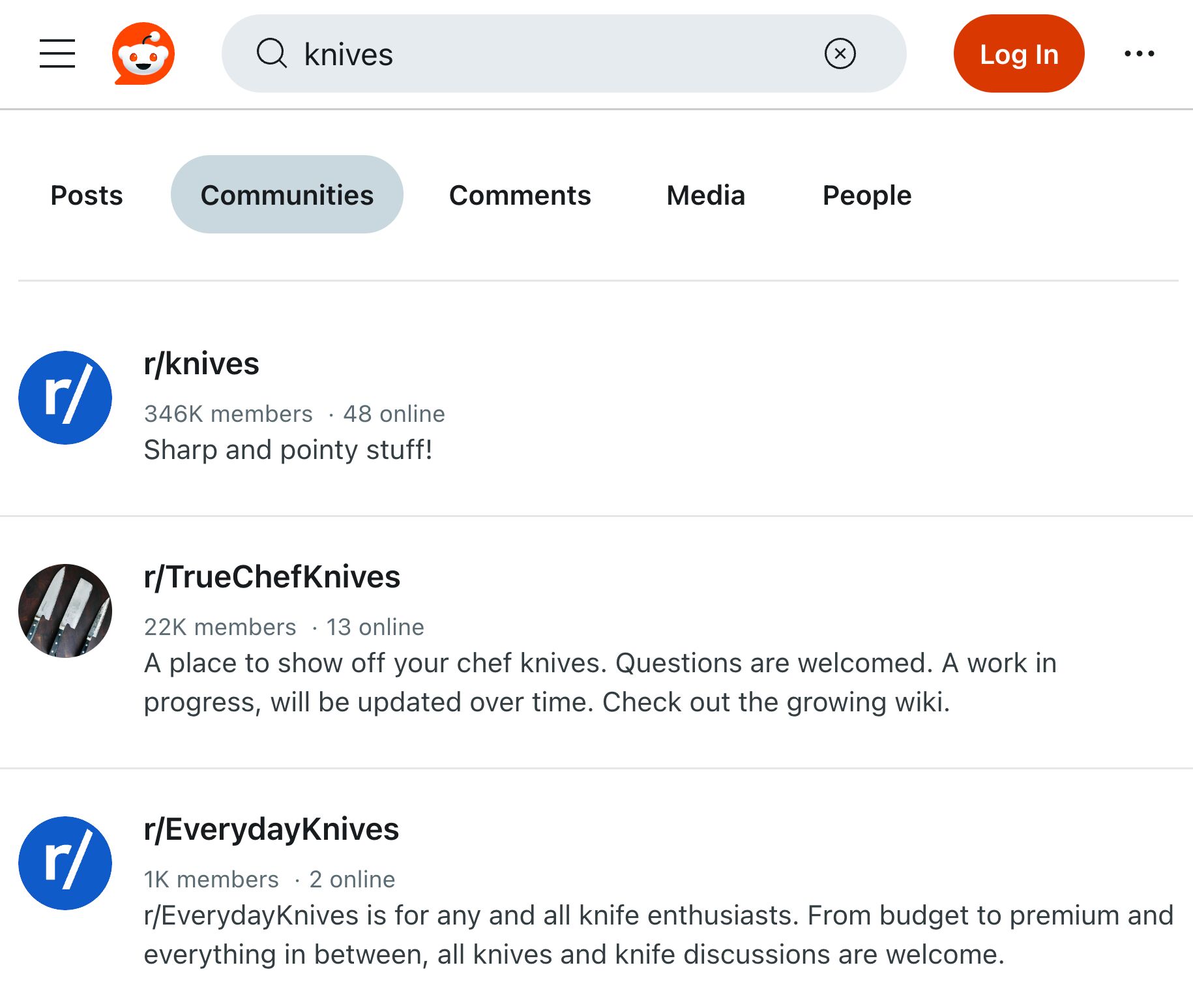

Choose the most relevant subreddit, then sort by Top, and your preferred time period.
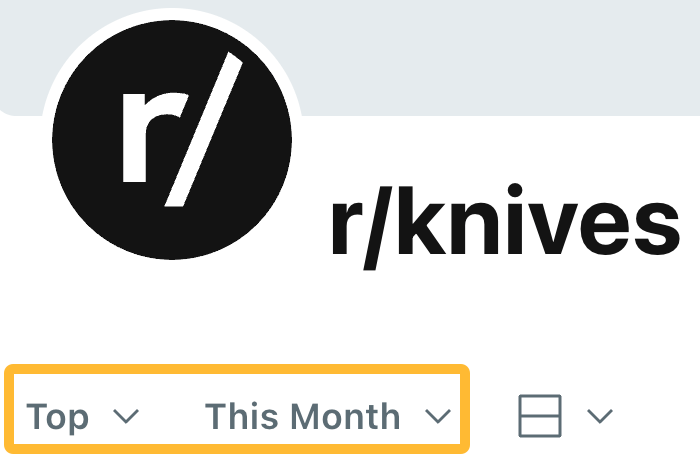

Scrolling through this subreddit, I found a discussion about “modern traditional knives”:


With 270 upvotes and 86 comments, this could be a potential topic to target if I sold knives online. But I can double-check if anyone’s searching for this keyword by entering it into Keywords Explorer:
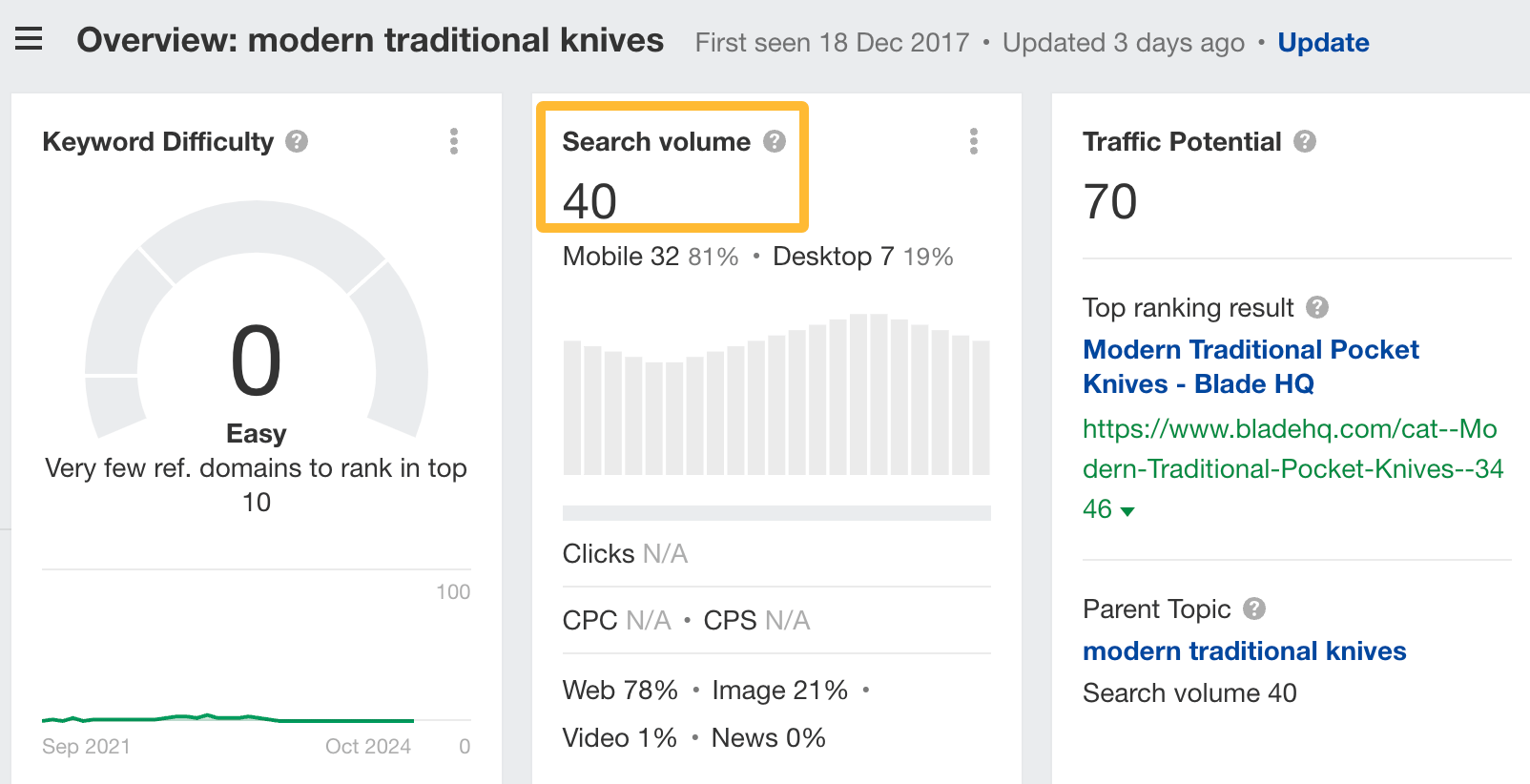

Not a lot of search volume (yet), but there are people looking for it!
Many trends begin on social media so needless to say, it’s the place to go if you’re looking for trending keywords.
For X, you can click on Explore and you’ll see a For You tab. This shows you trends for the topics you’re currently interested in.


As you can see, X knows I’m interested in technology and thus shows me the latest news and trends in tech. However, this is subject to your personal algorithm, so depending on how you use X, it may or may not show you relevant trends.
So, a better way is to do a search for your topic and see what the top tweets are.
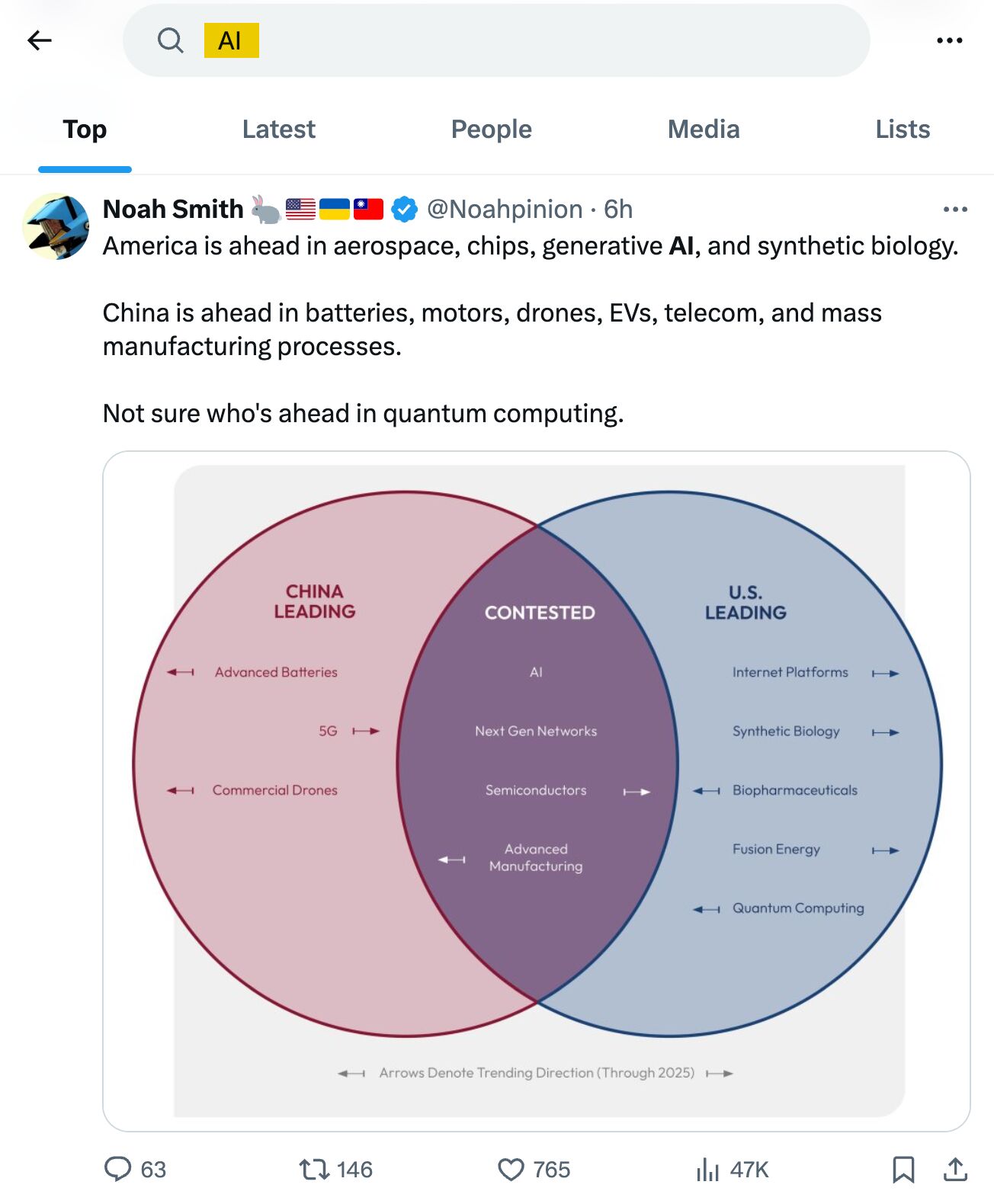

Instagram is less intuitive and doesn’t show you trends. So, you’ll have to make do by manipulating your algorithm to show you what’s popular in your niche or do a search and navigating to Tags:
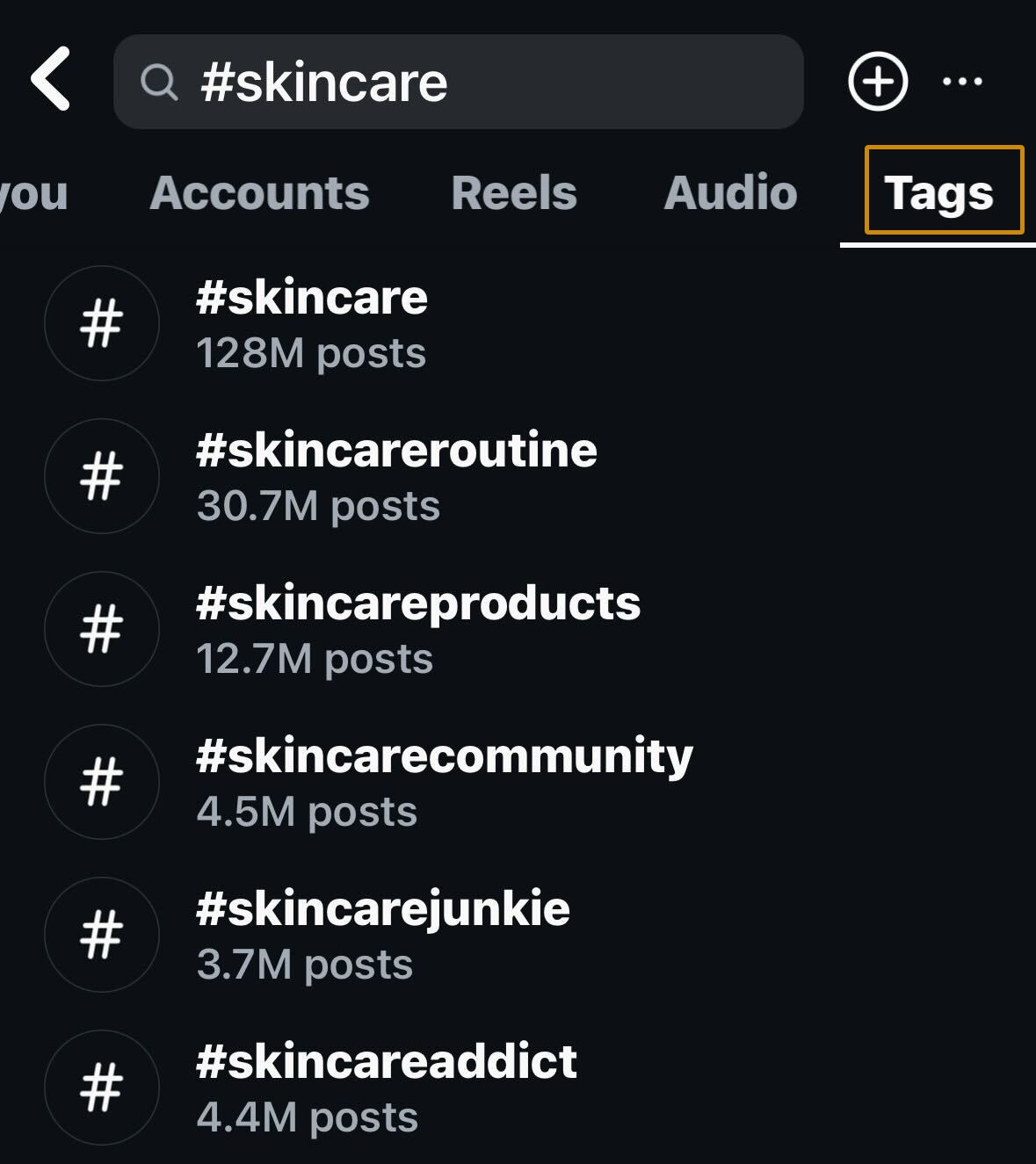

Click on the hashtags to see which posts or topics are trending.
For TikTok, if you have a Business account, you’ll be able to access their Creative Center where they show you what’s trending now:
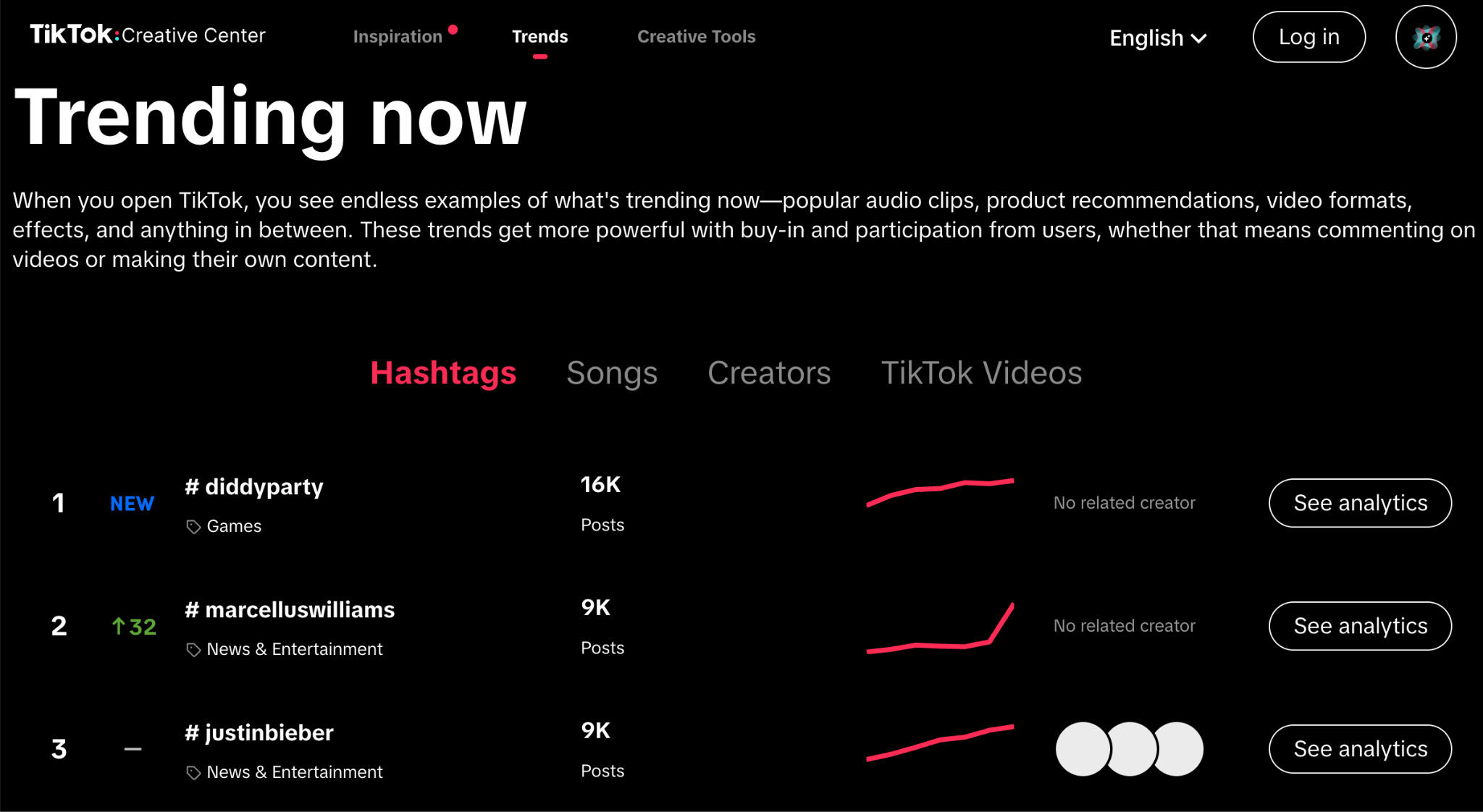

Like with Reddit, once you’ve noted down what’s trending in your niche, you’ll want to enter them into a keyword tool like Keywords Explorer to see if there is any search volume.
Here’s my cheat code for discovering trending keywords: Curate a newsletter.
Whether as a personal project, an internal newsletter for your team, or one that gets sent out to your customers, curating a newsletter will keep you up-to-date on all industry trends like no other.
For example, I write the Ahrefs’ Digest, our free weekly newsletter. Every week, I have to scour social media, forums, and other industry newsletters for the best-published content.
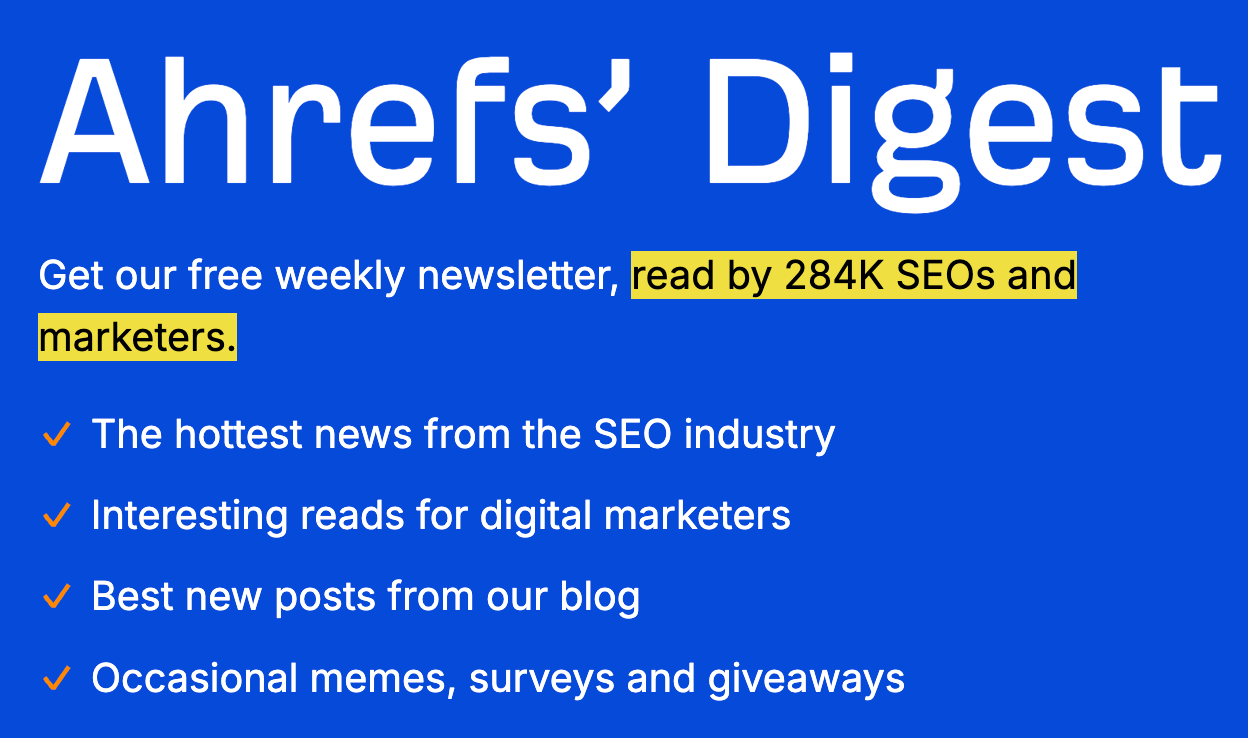

Doing so keeps me up-to-date on everything that’s happening in the industry—what just happened, what people are talking about, and what people are publishing.
For example, 200 issues later, I know that right now, people in SEO and marketing are interested in:
As you can see, we’ve already covered some of these topics and will cover more in the future.
Final thoughts
If you can’t beat them, be ahead of them.
When you can jump on trends before the big brands rush in, you stand a better chance of ranking higher on search engines and accumulating the good things: more authority and more backlinks. That can help you in your future quest to rank for the harder, more competitive keywords.
Did I miss out on any methods to find trending keywords? Let me know on LinkedIn.

![How AEO Will Impact Your Business's Google Visibility in 2026 Why Your Small Business’s Google Visibility in 2026 Depends on AEO [Webinar]](https://articles.entireweb.com/wp-content/uploads/2026/01/How-AEO-Will-Impact-Your-Businesss-Google-Visibility-in-2026-400x240.png)
![How AEO Will Impact Your Business's Google Visibility in 2026 Why Your Small Business’s Google Visibility in 2026 Depends on AEO [Webinar]](https://articles.entireweb.com/wp-content/uploads/2026/01/How-AEO-Will-Impact-Your-Businesss-Google-Visibility-in-2026-80x80.png)















